When you head out in the waters of the Great Barrier Reef on your snorkel and dives make sure you look out for ‘The Great Eight’ . That is the magnificent eight iconic marine encounters to tick off your bucket list.
- Clownfish
- Sharks
- Manta Rays
- Maori Wrasse
- Potato Cod
- Giant Clams
- Turtles
- Whales
1. Clownfish
The Clownfish have been made popular by the film ‘Finding Nemo’ but these iconic, small, striped fish can be found anywhere on the reef where anemones are. These fish are the only species that are immune to the stinging tentacles and therefore provide perfect shelter from predators.
Kids will love the challenge to find Nemo in sheltered reefs and lagoons hiding amongst anemones. The excitement of spotting a clownfish for the first time will have them jumping back in the water for another snorkel.
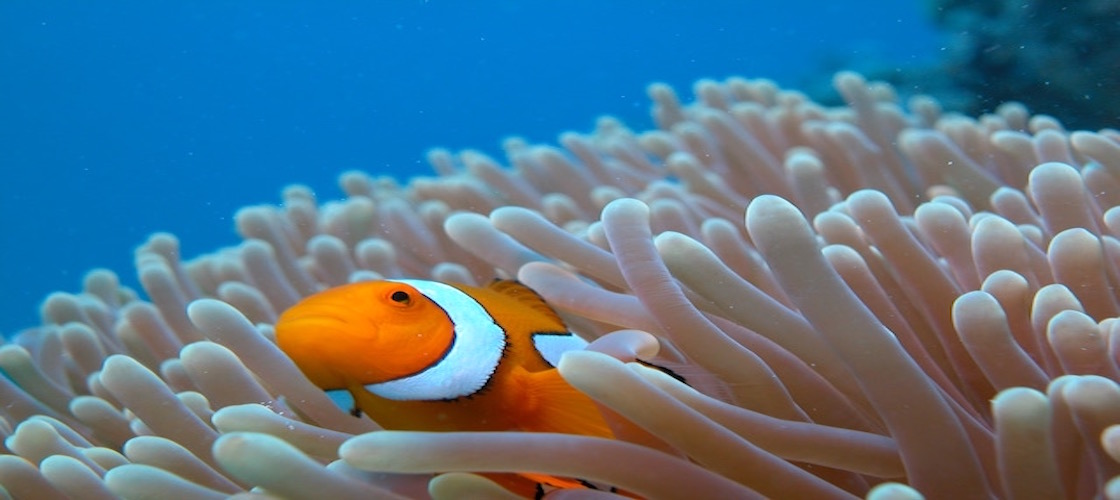
2. Sharks
Not quite as popular as the clownfish, but certainly just as intriguing are Sharks. Sharks are considered to be the predator in charge and at the top of the Great Barrier Reef food chain. The most common sharks to be found here are White Tip, Black Tip and Grey Reef Sharks. Reef sharks are rarely aggressive towards humans and often swim away before you get a chance to inspect them up close on your dive.
Reef Sharks tend to spend much of their day resting in caves or lying on the bottom of the ocean floor. In the evening is when they are active on the hunt for food. Unlike other Shark species, reef sharks only grow to about 2 metres in length. Humans aren’t their preferred food but if provoked, they can bite. As they prefer deeper depths, it is likely that only divers will get a chance to see them up close.
A number of overnight dive operators offer shark feeding experiences at Osprey Reef. The feeding frenzy that results is quite the sight to see. The video below is supplied by Mike Ball Dive Expeditions .
3. Manta Rays
Manta Rays tend to get a bad reputation because of their siblings-the Sting Ray. But Manta Rays are in fact harmless and are the gentle giants in the ocean. While they often do interact with humans, they do not seek out areas where humans are swimming. These grace and majestic creatures have a wingspan that can grow up to seven metres. Their large size can often intimidate divers but they do not possess the venomous tail spikes. Lady Elliot Island in the Southern Great Barrier Reef has been named the home of the Manta Ray with an abundance of rays in the area that greet divers everyday.
Rays feed on molluscs and crustaceans at the depth of the ocean but other rays such as the Manta Ray feed on plankton. Many divers seek out Manta Rays and frequently say it is the highlight of their dives.
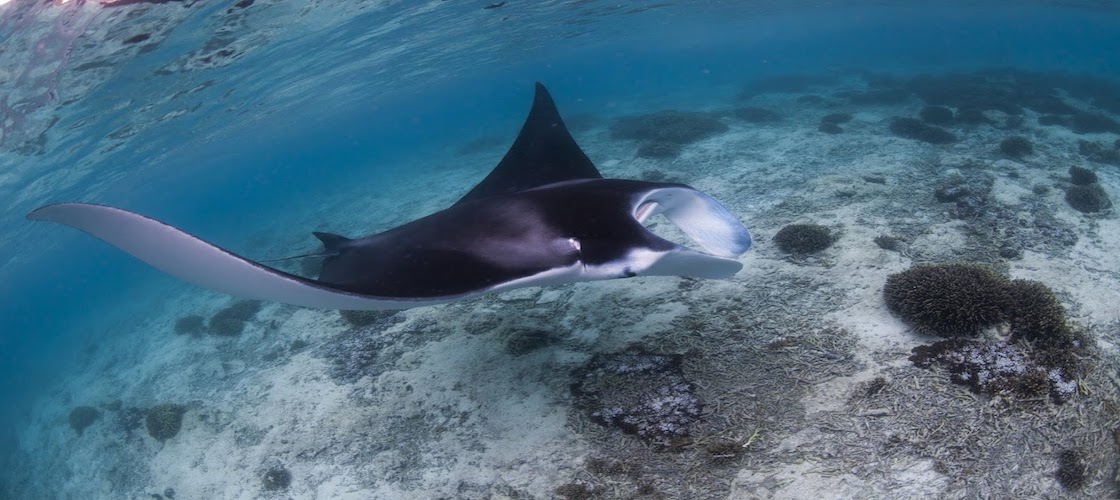
4.Maori Wrasse
The Maori Wrasse are one of the most unique fish that you will come across on your underwater adventures in the Great Barrier Reef. It is hard to mistake the Maori Wrasse with any other fish. The Wrasse has big thick lips, is brightly coloured and has a distinct bump on its head.
The Maori Wrasse are a large but very friendly fish that tends to swim along with fellow snorkelers it takes a liking to. The Wrasse are now a protected species in the Great Barrier Reef because of a depletion in numbers. The Wrasse play a very important role in the ecology of the reef as they feed on boxfish and the crown of thorns starfish which threatens the survival of the Great Barrier Reef.
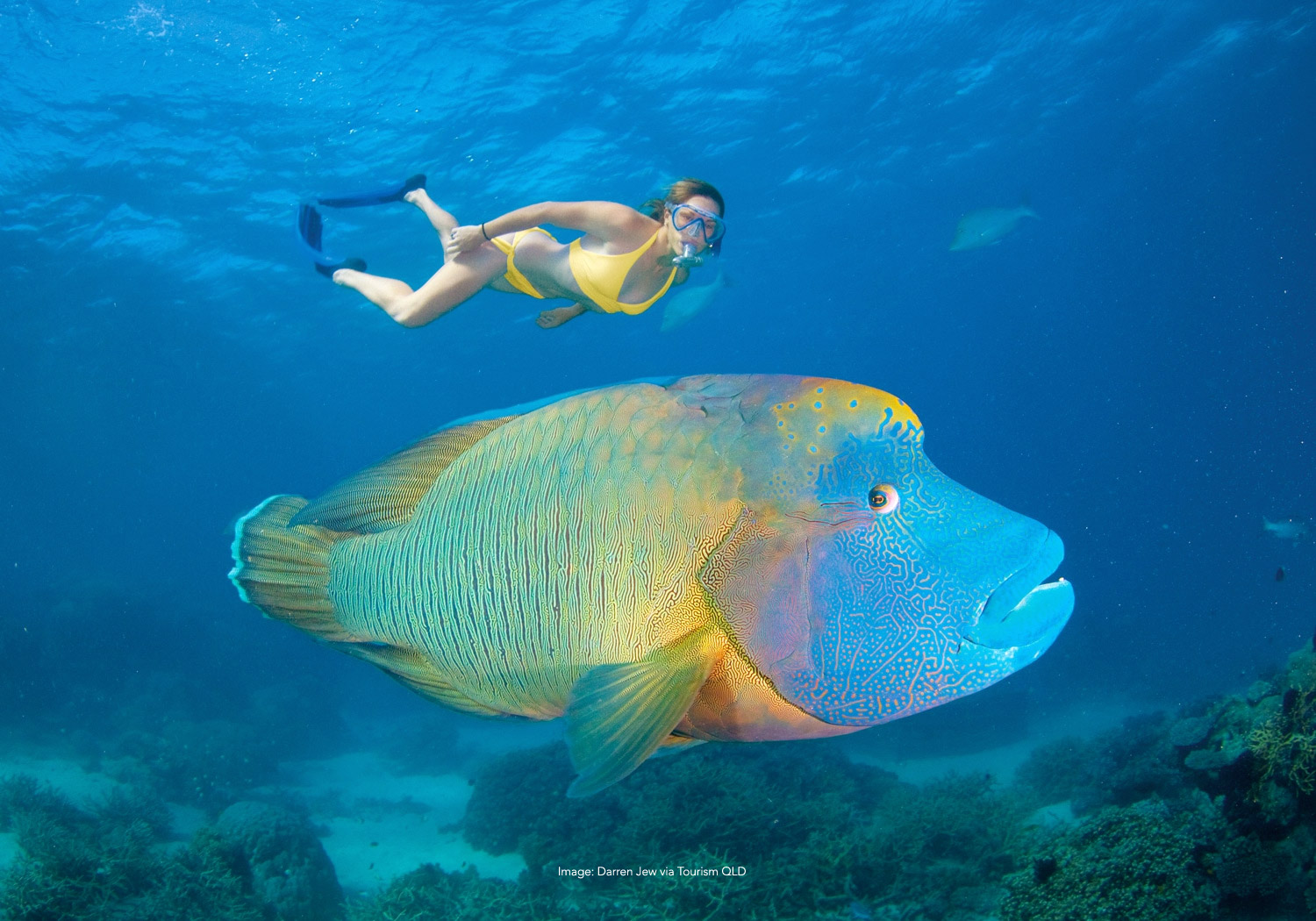
5. Potato Cod
The Potato Cod aren’t the brightest coloured fish in the sea but like the Maori Wrasse it is distinct in its features. Potato Cod are grey-brown cod- usually covered in spots- and can grow up to 2 metres long and weigh up to 100 kilograms.
The Cod Hole is a favourite dive site among divers and can be found 160 kilometres from Port Douglas in the Agincourt Ribbon Reefs. The remote location means that you cannot visit this site on a day trip but if you are a diver then there are several overnight liveaboard boats that can be booked to dive this location.
A diver once told me that the Potato Cod are like the tour guides of the reef because they will lead you to some of the best parts of the coral reef where they inhabit. Their large size should not be feared for they are one of the friendliest marine species in the Great Barrier Reef and they appear to be interested in human interaction.
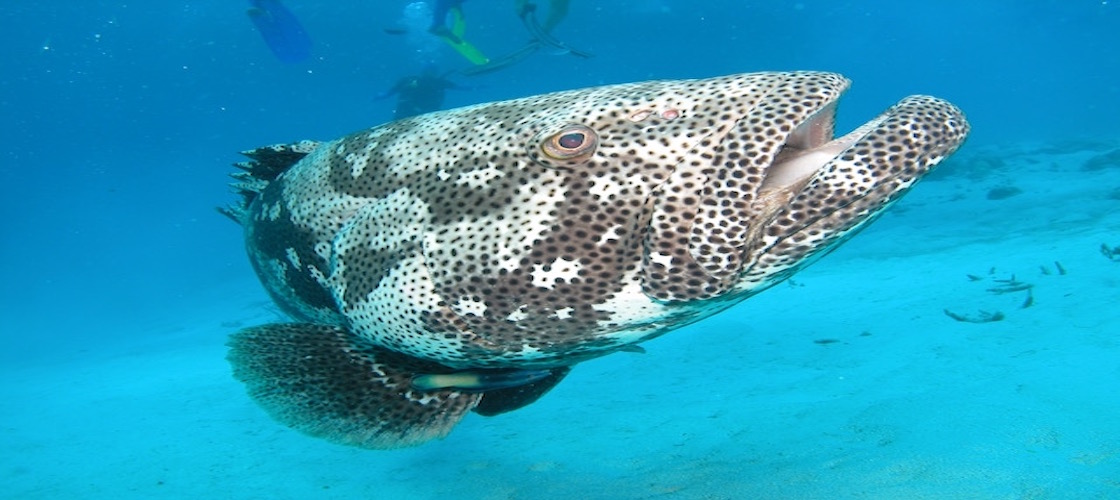
6. Giant Clams
Giant Clams are molluscs that have large, unique and often brightly coloured shells and are found within the Great Barrier Reef. Giant Clams are quite unique because they have both male and female parts enabling them to produce and fertilise their own eggs. Weighing up to 200 kg and living for approximately 100 years, the clams feed on plankton and algae and spend their days photosynthesising under the sunlight. Clams attach themselves to one location in shallow waters no more than 20 metres deep.
Giant Clams can be found near Lizard Island and Magnetic Island.
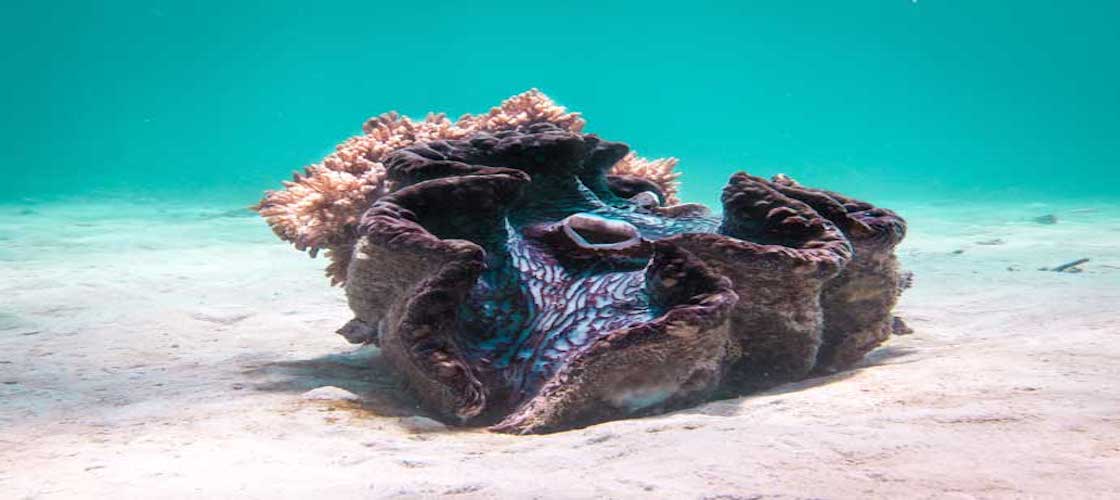
7. Turtles
Six of the world’s seven turtle species live on the Great Barrier Reef. Like most marine animals in the reef, they are very friendly and curious about humans but they are an endangered and protected species. Turtles are commonly found in the Southern Great Barrier Reef but can also be found in Northern Great Barrier Reef.
The Southern Great Barrier Reef is very significant to the turtle population as they use the islands for breeding and hatching. It is very common to find turtles on any coral reef, however, you are almost guaranteed sightings here within this region.

8. Whales
Humpback Whales travel into the waters of the Great Barrier Reef from May to September on their annual migration to calve and build up strength before their journey to Antarctica in the summer. Humpback Whales need to be seen to be believed. Their tremendous size and playful personality is quite a sight to see. Whales like to put on a show breaching and slapping their fins against the water.

So there are your Great Eight marine encounters that can be had on the Great Barrier Reef. Whilst there are certain places and times of the year where you are guaranteed to see some of the great eight, keep your eyes peeled because you may find several of these in other parts of the Great Barrier Reef on a day trip.

